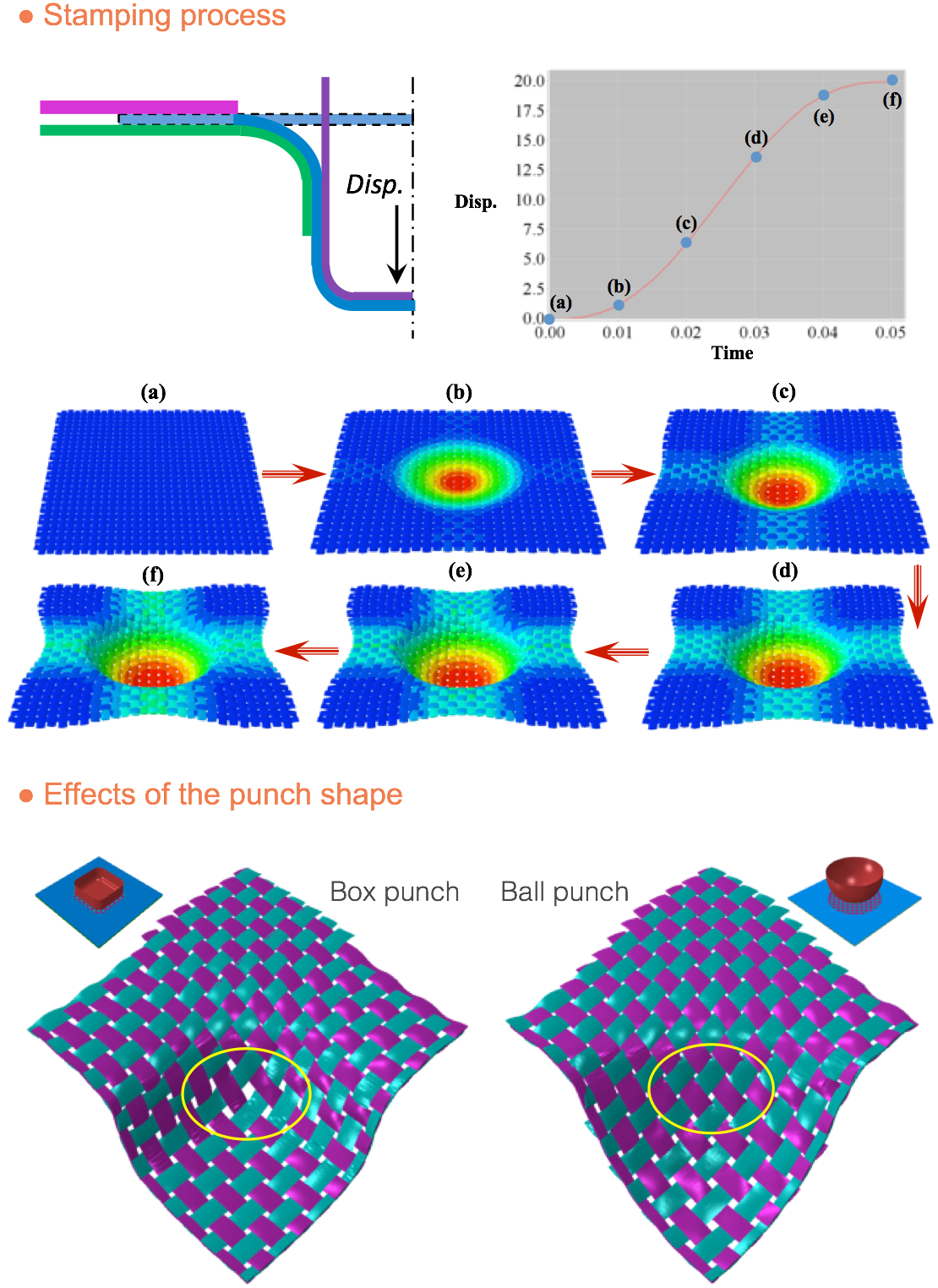Woven fabrics are produced by the interlacing of warp fiber tows (0°) and fill fiber tows (90°) in a regular pattern or weave style.
The weave describes how the warp and fill tows are interlaced. The most popular weaves are plain, twill, and satin. The weave pattern determines drapability and isotropy of strength.
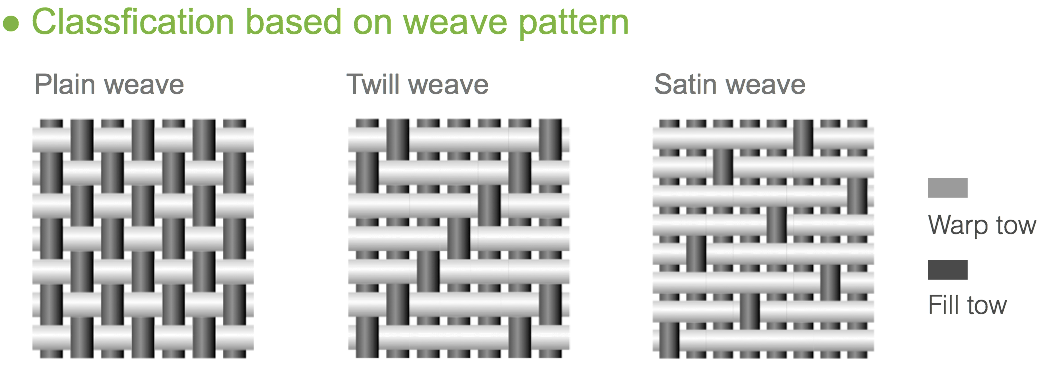
(1) Width of tow —
The plain weave is made by interlacing the warp and fill tows in an alternating pattern. Therefore, the undulation is composed of several arcs. For twill and satin weaves, the weave pattern is composed of a strain line and several arcs.
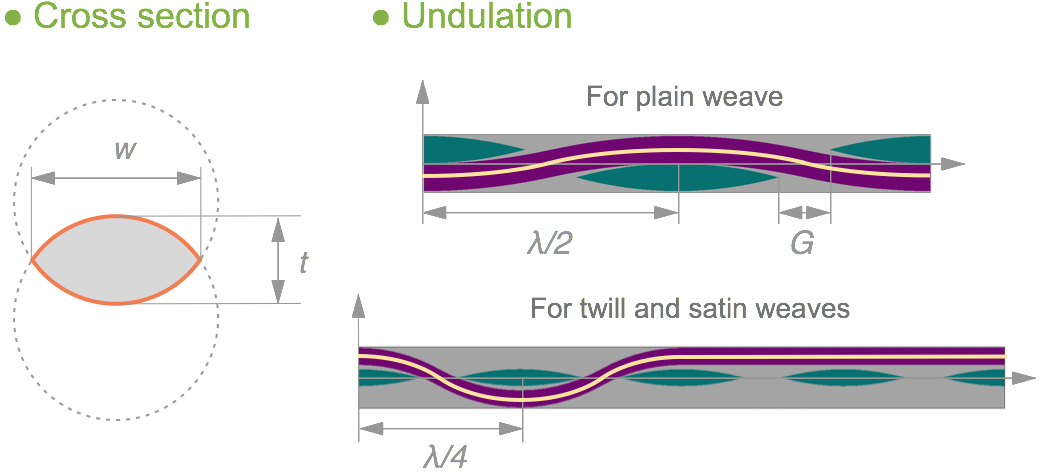
(1) The multi-stage damage model is adopted to cover both the hardening and softening behaviors considering the ductile characteristics of the matrix.
(2) The sudden-drop damage model is adopted to simulate the mechanical performance of the fiber considering its brittle characteristics.
(3) The damage models were programmed in the user subroutine for ABAQUS so that the failure and damage mechanisms can be captured in the FEM analysis.
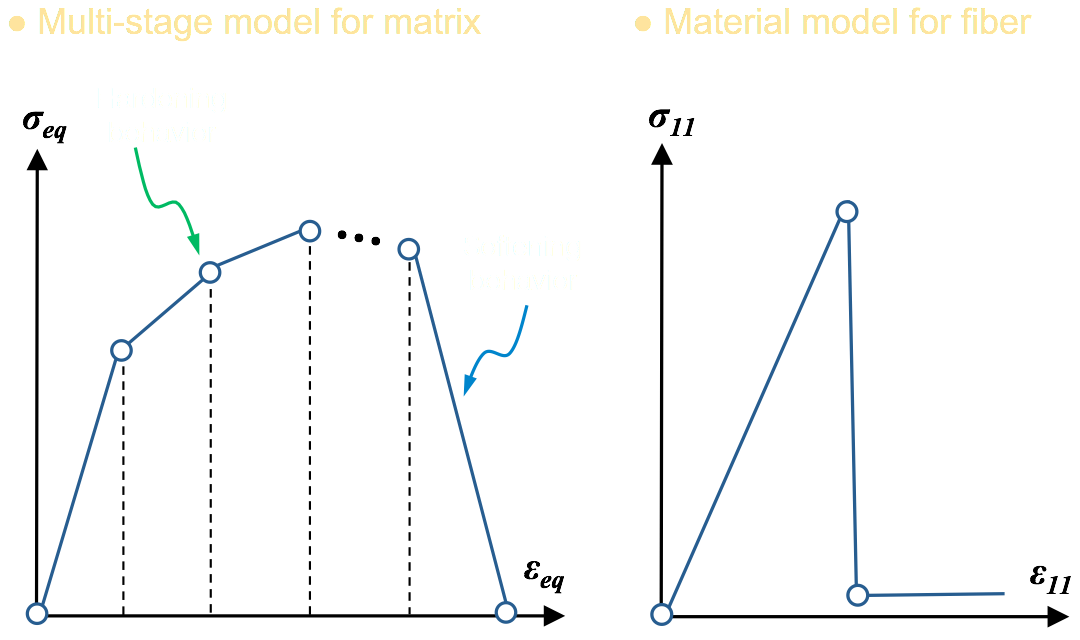
(1) As described in the braided section, periodical boundary conditions were assigned on the unit cell model of woven fabrics. The effective material properties can be computed running the 6 cases with unit strain loading.
(2) The constituent damage models combined with micromechanics were implemented into the damage analysis. The multi-scale approach can provide detailed damage information of the constituents. In this case, the matrix damage in tows, the fiber damage in tows, and the pure matrix damage were captured along with the stress-strain variation.
(3) The damage in each constituent propagates as the loading increases. The final rupture was led by the fiber breakages in the tow.
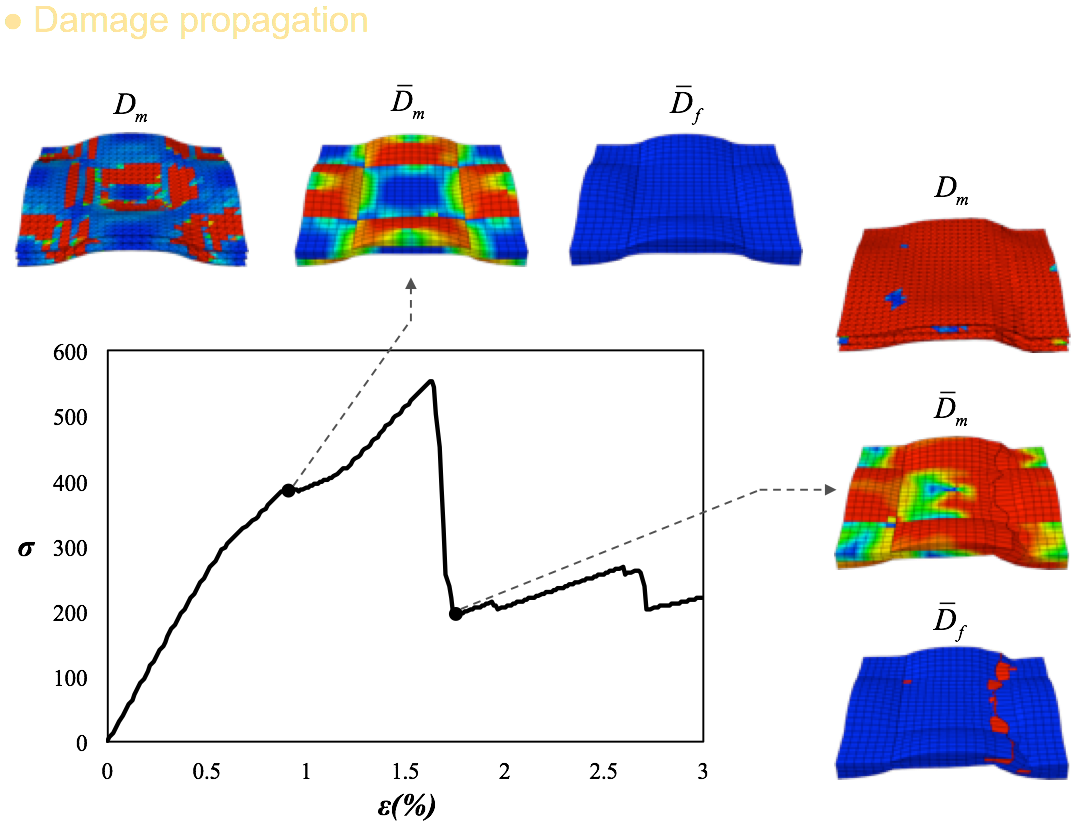
(1) The whole piece of woven fabric was modelled by linearly repeating the unit cell models in both x- and y- directions, and the elements are 3D brick elements.
(2) The holder, punch and die were modelled as rigid bodies using shell elements.
(3) The four parts were assembled, and contact properties were defined for all pairs: the fabric-die pair, the fabric-holder pair and the fabric-punch pair.
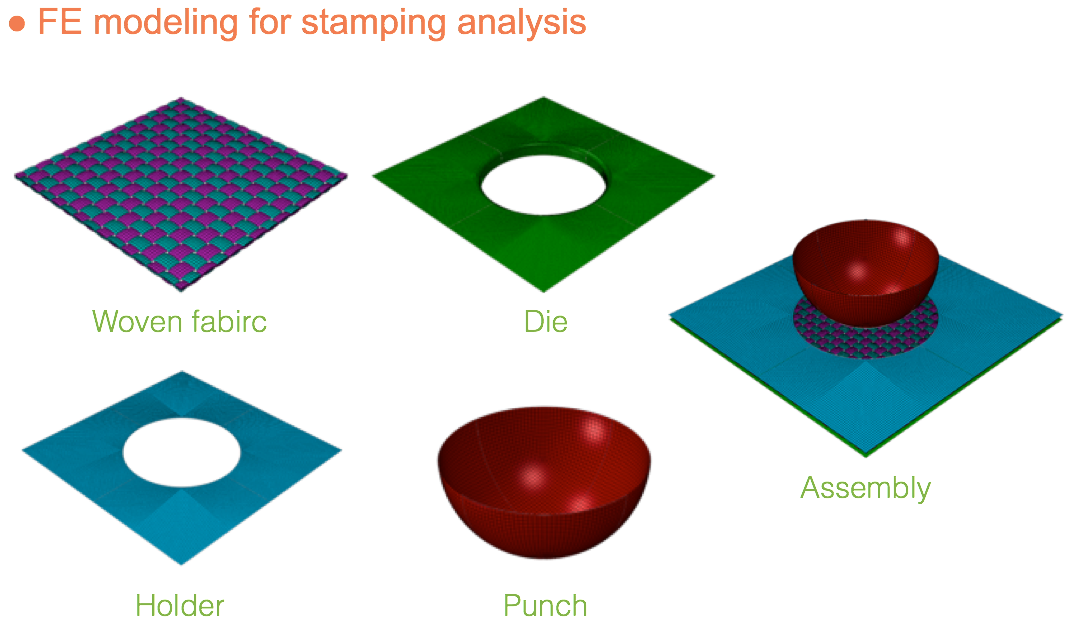
(1) As the punch moves, the entire fabric gradually deforms into the shape of the punch.
(2) During the stamping process, the jamming phenomenon occurs at the four corners of the fabric due to the squeezing and interaction among the tows. While large voids occur at the bottom of the fabric due to the large contact force between the fabric and the punch.
(3) The weave pattern has a major effect on the drapability of the fabric. From parametric studies, the satin weave has the best drapability, while the plain weave has the poorest drapability.
(4) The shape of the punch also has a big effect on the stamping results. For instance, the box-shaped punch causes much larger voids than the ball-shaped punch due to the sharp corner of the punch.
